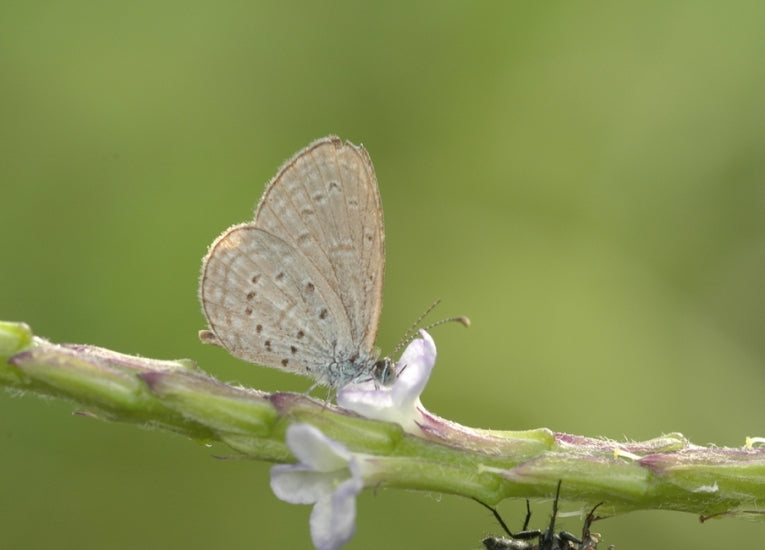When Hiroshima and Nagasaki exploded, the research on their effects was on human misery and human effects. Today, we have another Japanese disaster, Fukushima, which allows the more scientific investigation of the effects of nuclear particles such as iodine on the genotype of a species.
Human results I'm sure will be produced, but a short life cycle like the annual butterfly can give us results now that will affect future generations.
This study, published in Nature, is admirable in its depth and findings on the genetic change in generations we can expect from radiation. Two months after the Fukushima nuclear disaster, 144 specimens of the pale grass blue were collected from the 10 localities shown on the map below.

Credit: © Nature
Above: (a) Collection localities. (b) Representative wings with normal (leftmost) and aberrant colour patterns. (c) Male forewing sizes from various localities. (d) Scatter plot of the male forewing size and ground radiation dose at each collection locality. (e) Representative morphological abnormalities
They appeared normal but with 12.4% of minor abnormalities. If you look at (e) in the figure, the dented eyes, the deformed left eye, the deformed right palp and the deformed wing shape were the only visible abnormalities found.
The pale grass blue butterfly, Zizeeria maha is now, as a species in the Fukushima region, deteriorating both genetically and physiologically. The radionuclides held responsible caused abnormalities in the first generation (F1).
These were inherited in the F2 generation and subsequent descendants, meaning that the genome was drastically interfered with later too. More telling, with the use of these radionuclides artificially, it was possible to reproduce the effects found in nature. Some people could say that was unnecessary but look closely at the conclusions to find how significant this could be to other animals and humans.

Credit: © Nature
Above: Rearing system of the pale grass blue butterfly in the laboratory, where the insects were tested artificially to copy the radionuclide effects (a) Cages for rearing. (b) Plants and butterflies inside a cage. Inset shows a pale grass blue butterfly feeding on a flower inside the cage
6 months after the accident at Fukushima, 238 specimens provided very frequent (28.1%) malformations of the legs and antennae along with wing colours. Mortality rate also rose as the researchers found as they collected. The caterpillars and the adults would of course both be affected, and only the adults were studies here.
The massive release of radioactivity at Fukushima Dai-ichi Nuclear Power Plant affected more than one butterfly. It started with minor effects but in this annual species, it increasingly looks like causing almost a local extinction in a common animal.
In other species, the next generation needs to be examined and the generation after that, because the implications for even humans are dire. Thanks to all of the authors including the lead scientists Atsuki Hiyama and Chiyo Nohara of the University of the Ryukyus, Okinawa.










